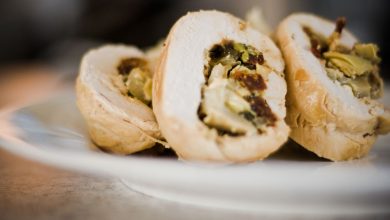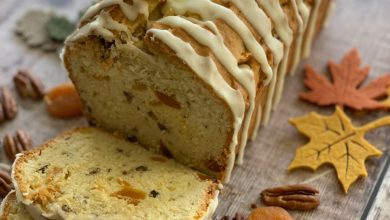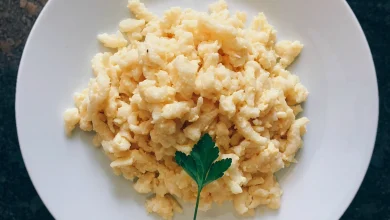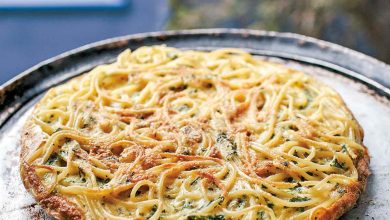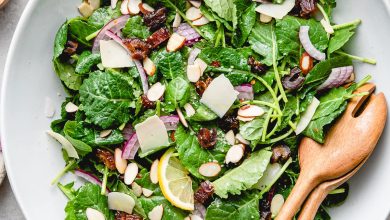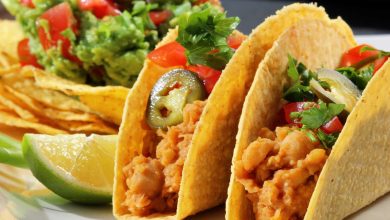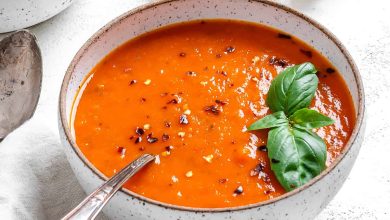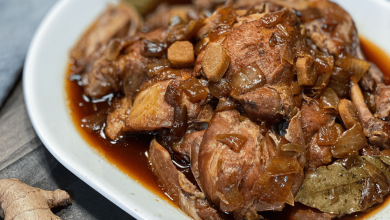Angel Hair Pasta With Creamy Salmon
🍝 Angel Hair Pasta with Creamy Salmon 🐟
Angel Hair Pasta with Creamy Salmon is a delightful Italian-inspired dish that combines the delicate flavors of angel hair pasta with the richness of creamy salmon sauce. This dish is perfect for seafood lovers and pasta enthusiasts alike. Here’s a detailed breakdown of what it is, its history, its components, the steps to prepare it, and the estimated time needed:
📜 History:
The origins of this dish are not well-documented, but it draws inspiration from Italian cuisine, which is renowned for its pasta and seafood combinations. It likely emerged as a fusion of Italian and other culinary traditions, showcasing the versatility of pasta as a canvas for different flavors.
🧀 Components:
- Angel Hair Pasta: Thin, delicate pasta that cooks quickly.
- Salmon: Fresh or smoked salmon, providing a rich, savory flavor.
- Cream Sauce: A luscious sauce made from heavy cream, butter, and seasonings.
- Garlic: Adds a fragrant kick to the sauce.
- Parmesan Cheese: Grated Parmesan for a cheesy finish.
- Fresh Herbs: Such as parsley or dill for garnish.
- Lemon Juice: To brighten the flavors.
🍽️ Steps to Prepare:
-
Cook the Pasta: Bring a large pot of salted water to a boil. Add the angel hair pasta and cook until al dente, following the package instructions. Drain and set aside.
-
Prepare the Salmon: If using fresh salmon, season it with salt and pepper. Heat a skillet over medium-high heat, add some olive oil, and cook the salmon until it flakes easily. If using smoked salmon, you can skip this step.
-
Make the Creamy Sauce: In the same skillet, melt butter and sauté minced garlic until fragrant. Pour in heavy cream, stirring constantly, and let it simmer until it thickens slightly. Season with salt, pepper, and a squeeze of lemon juice to taste.
-
Combine Ingredients: Flake the cooked salmon into the creamy sauce. Add grated Parmesan cheese and stir until the sauce is creamy and the salmon is well-distributed.
-
Final Assembly: Toss the cooked angel hair pasta into the creamy salmon sauce, ensuring it’s well-coated. Cook for an additional minute to heat through.
-
Garnish and Serve: Plate the pasta, garnish with fresh herbs, and sprinkle with extra Parmesan cheese. You can add a lemon wedge for an extra burst of flavor.
⏱️ Estimated Time:
- Preparation: 15 minutes
- Cooking Pasta: 5-7 minutes
- Cooking Salmon: 5-7 minutes (if using fresh salmon)
- Making the Sauce: 10-12 minutes
- Assembly: 2-3 minutes
In total, you can expect to prepare this delicious Angel Hair Pasta with Creamy Salmon in approximately 35-40 minutes. It’s a fantastic choice for a special dinner or any time you’re craving a comforting, seafood-infused pasta dish. Enjoy! 🍽️😋🐟
Certainly! Here are the nutrition facts and some health information for Angel Hair Pasta with Creamy Salmon (per serving, assuming a typical serving size):
Nutrition Facts:
- Calories: Approximately 450-550 calories
- Protein: Around 20-25 grams
- Carbohydrates: Approximately 40-45 grams
- Dietary Fiber: 2-3 grams
- Sugars: 2-3 grams
- Fat: Around 25-30 grams
- Saturated Fat: 10-12 grams
- Cholesterol: Approximately 70-80 milligrams
- Sodium: Around 600-700 milligrams
Health Information:
-
Protein: Salmon is a great source of high-quality protein, which is essential for muscle repair and growth.
-
Omega-3 Fatty Acids: Salmon is rich in omega-3 fatty acids, which are heart-healthy and have anti-inflammatory properties.
-
Healthy Fats: While this dish contains some saturated fat from cream and butter, it also provides beneficial fats from salmon, which can help support brain health.
-
Calcium: Parmesan cheese contributes to the calcium content, which is important for strong bones and teeth.
-
Moderation: Due to the creamy sauce and pasta, this dish can be relatively high in calories. It’s essential to enjoy it in moderation as part of a balanced diet.
-
Balance: Pair this indulgent pasta dish with a side salad or steamed vegetables to increase its nutritional value and add more fiber and vitamins to your meal.
Remember that actual nutrition values may vary based on the specific ingredients and portion sizes used in your recipe. It’s always a good idea to check nutrition labels and consult with a healthcare professional for personalized dietary recommendations.

